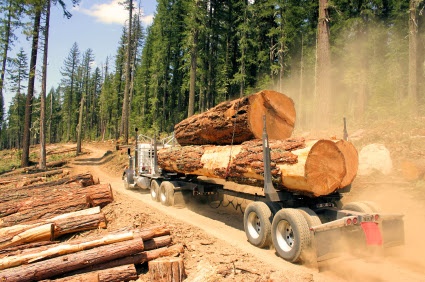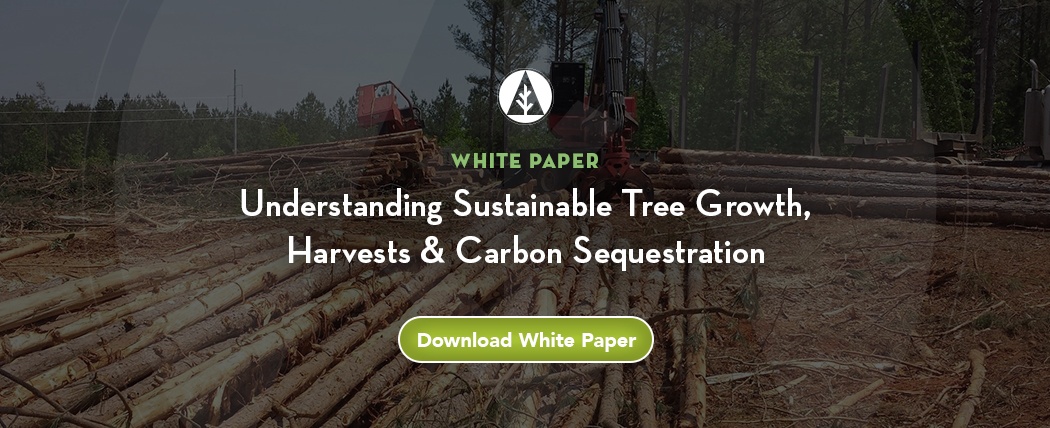
Our friends at Healthy Forests Healthy Communities were recently asked about a guest opinion that appeared in the East Oregonian newspaper, which argues that logging and wood processing emits far more carbon than a wildfire. The following is that opinion, along with HFHC’s responses (in bold):
| One of the arguments alleged by proponents of thinning or logging forests is that it would preclude wildfires and reduce carbon emissions from wildfire. Proponents argue that more trees survive a fire if there has been “active forest management.” |
The author should really see the forest for the trees. Researchers have consistently found that the use of active forest management helps reduce the intensity of wildfires. It also gives firefighters better and safer opportunities to contain fires before they gain strength and destroy our forests and communities.
Thinning is a key management tool, because reducing stand densities to sustainable levels helps promote the health and resiliency of our forests, so they can better withstand fires when they inevitably ignite.
| The problem with such ebullient pronouncements is that they fail to provide a full accounting of the carbon losses and emissions. A number of studies that reviewed carbon emissions conclude that logging and wood processing emits far more carbon than a fire. For instance, one study estimates that logging in the United States releases five times the carbon as wildfire, bark beetles, wind thrown, land use conservations, and drought combined. Another Oregon study calculates that 35% of the carbon emissions in the state results from the wood products sector, while wildfires average approximately 4%. |
The problem with such agenda-driven “research” is that it fails to account for the carbon losses and emissions that occur from the lack of active forest management, and when we choose not to plant, grow, harvest and manufacture our wood products here at home.
For example, the study cited by the author doesn’t account for carbon emissions that occur when we outsource our timber harvesting and wood products to other countries that don’t share our high environmental standards. Would we really reduce our carbon footprint by importing wood from Brazil or Russia, rather than Oregon?
According to the University of Washington’s Forest Carbon Study, Washington’s private forests and forestry sector are a “Below Net Zero” carbon emitter. Although the processes associated with manufacturing wood and paper products emit some greenhouse gasses, growing trees and using wood products store more carbon than is emitted, reducing Washington’s carbon footprint by 12 percent. Forestry’s carbon footprint is further reduced when we convert low-value woody material from thinning into renewable energy.
|
Making matters worse is that logging advocates fail to consider that in thinning the forest, you are killing trees. The problem is that where and when a fire will occur is unpredictable. The majority of all thinned acres never encounter a fire. Some estimates suggest less than 1-2% of all thinned acres experience a fire when they might potentially influence fire behavior and tree mortality. |
Our western forests are facing what one scientist calls an “epidemic of trees,” where we have more trees than the landscape can support. The intense competition for sunlight and nutrients can weaken trees and reduce their ability to withstand severe wildfires. It is can also result in insect attacks and disease, which contributes to high tree mortality and more fuel for severe wildfires. Thinning forests- yes that means removing some trees- contributes to the growth and vitality of remaining trees and enables them to sequester and store more carbon. When it comes to thinning forests the only question is: Why are we not doing more of it?
| As one group of researchers concluded: “Thinning forests to reduce potential carbon losses due to wildfire is in direct conflict with carbon sequestration goals.” They go on to conclude “the amount of carbon removed to change fire behavior is often far larger than that saved by changing fire behavior, and more area has to be harvested than will ultimately burn over the period of effectiveness of the thinning treatment.” In fact, one estimate suggests it may take 100 years to replace the carbon loss resulting from forest management. |
There is also independent research showing that trees are dying at alarming rates, due to wildfires, insects, disease, drought and other impacts of climate change. Dead trees do not sequester carbon, they only emit carbon and other greenhouse gasses over time. Walking away from our forests only serves to continue that trend.
One researcher found that wildfires emit greenhouse gasses at a rate equivalent to 48 cars per acre. In this scenario, the researcher suggested we’d need to park one million cars for entire year to account for greenhouse gasses from a 21,000-acre fire. Interestingly, the decay of the dead trees following a wildfire is more significant in affecting the climate than the fire itself.
Agenda-driven researchers tend to assume the public doesn’t need wood products, and their advocacy tends to suggest we should substitute wood for steel and concrete that require more fossil fuels to produce. Not only do wood products store carbon and require less energy and emissions to produce, but managed forests uptake and sequester more carbon as new trees are planted and they grow.
|
Thinning larger areas to decrease the probability of high-severity fire ensures decreased carbon stock and net carbon balance over the treated area. Let us say 50% of the trees are removed in a thinning project, that is 50% of the stored carbon. So even if a thinned stand burns at lower severity and most trees survive a fire, the net result is still a significant loss of carbon due to tree removal because of the logging. Plus, in logging the trees (killing them), you reduce the future carbon storage that would have otherwise occurred had the trees remained in the forest. So, we get a guaranteed removal of carbon and carbon emissions with logging/thinning that contributes to climate warming, which is, in turn, contributing to more fires. |
Using this same logic, if we choose not to manage our forests, we may lose 100% of the trees to stand-replacing wildfires, and then we will lose all of that stored carbon over time as trees rot and decompose. The problem is made worse when forests fail to naturally regenerate after a severe wildfire, and instead convert to shrublands that do not sequester carbon at the same rates.
| So, we get a guaranteed removal of carbon and carbon emissions with logging/thinning that contributes to climate warming, which is, in turn, contributing to more fires. Even if a forest stand burns in a high severity fire where the majority of trees are killed, most of the carbon remains on the site as snags, branches, charcoal, and roots in the soil. |
Once again, dead trees and other dead material don’t sequester carbon, only vigorously growing trees do. Dead trees, dead material and sterilized soils from severe wildfires only release carbon over time.
| A further problem is an assumption that logging the forest will preclude large high severity blazes (where most trees are killed). However, there is abundant scientific and anecdotal evidence that logging does little to prevent large wildfires. The best management for our forests and climate is to stop logging our public forests. |
We have tried passive forest management for the past 30 years, and it has resulted in more severe wildfires, unhealthy forests and more carbon emissions. There is only one “guarantee:” walking away from our forests and choosing not to manage them will only result in more of the same.


 Nick Smith
Nick Smith



